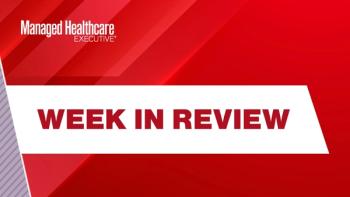
- MHE February 2022
- Volume 32
- Issue 2
‘Hybrid Health’ Opens up Opportunities and Exposes Gaps in Healthcare
Adoption of digital health technologies came fast and furious in the pandemic, but now it’s up to insurers and patients to figure out the best recipe for a mix of remote and in-person care.
Very occasionally there are breakthroughs, but change is usually a slowpoke when comes to healthcare, inching along or nibbling on the margins, entrenched interests and ways of doing things standing in its way.
But then there was March 2020, a health crisis like no other, and clumsy healthcare got up on the balls of its feet and pivoted. Parents who previously would have had an in-person doctor’s visit for a marginally sick child now replaced those visits with a telehealth consultation. Patients tested for COVID-19 now checked their smartphone electronic health record apps to get their results. And people worried they might have COVID-19 symptoms looked to their Apple Watches to check their blood oxygen levels.
“Companies like Amazon and Apple have taught consumers how to engage digitally,” says Amanda Baethke, M.S., director of corporate development at Aeroflow Healthcare, a durable medical equipment maker based in North Carolina. “Then the COVID-19 pandemic dramatically accelerated the adoption of digital healthcare, which transformed the patient experience and left patients consuming healthcare digitally more than before.”
Even older patients, many of whom are better-late-than-never adopters, began to embrace technology such as home monitoring devices to keep touch with providers.
Baethke said the pandemic brought into focus the new paradigm of “hybrid healthcare.” It is not about digital replacement of in-person healthcare, but layering in tools and services that allow for remote care and give patients (and their families) options.
“A hybrid model enables both convenience and cost-effective healthcare through telehealth while still providing vital face-to-face care when appropriate,” Baethke says. “As patients become more familiar and health plans adopt more services, our tech-savvy consumers would be able to receive timely care from the convenience of their homes.”
However, the pandemic also brought into focus just how much work has yet to be done to make hybrid healthcare an authentic, sustainable way of delivering healthcare. In some ways, the technology and its gee-whizness is the easy part. What’s harder and multidimensional is figuring out ways to fold that technology into existing processes so it is used to improve people’s health.
Appreciate the data points
For payers, the new health-tech paradigm comes as both an opportunity and a challenge. Patients who might normally see a physician within a 50-mile radius might suddenly want to see a physician on the other side of the state — or country — using a telehealth app while still paying in-network rates. Consumers might also expect coverage for medical devices that may not be approved by the FDA. Take the Apple Watch, for example. Despite a heavy marketing campaign positioning it as a health and fitness device, users who take a blood oxygen reading on their Apple Watch will see a disclaimer warning that the reading is “not intended for medical use.”
Baethke said some insurers have been quick to align with changing consumer expectations, but she said there are too many exceptions. “Insurers seem to be slow to evaluate the various services that can be offered via telehealth,” she says. “There seems to be a disconnect between what consumers want and what insurers are willing to provide.”
Tension about which services insurers choose to cover is not new and will never go away. But remote care adds a new dimension. Baethke offers the example of a new mother who needs assistance breastfeeding. Although lactation consultation would traditionally be done in person, it can also be offered online. In order for such services to be covered, though, insurers need to be prepared to expand their networks to include new types of services and providers.
“In addition to providing prompt care, telehealth also creates more robust networks,” she says. “If the new mom was based in a rural area where access (to lactation consultants) was limited, the use of telehealth would provide support she would otherwise not be able to reach.”
“If telehealth provides an opportunity for a consumer to engage where they may not have otherwise done so,” Baethke adds, “health plans should appreciate the additional data point and leverage this behavior to align with their goals for patient journeys.”
The wait-and-seers
The early adopters among us (and the companies making the products they have adopted) may put some pressure on insurers to cover digital health services. But there is also a large swath of the population that will probably need to see the services offered before they are willing to take the leap into hybrid health. Baethke says that creates a communication challenge for insurers.
“We have, arguably, the most knowledgeable and engaged population of patients that we have ever had,” she observes. “With the rising healthcare costs, patients want to be informed of their benefits and how it impacts them.” For instance, in competitive markets such as Medicaid managed care plans, the availability of hybrid health options is becoming more important.
“We do see consumers eliciting feedback from each other on plans that produce the most value for them, the consumer,” she comments. “It is important that plans look at how consumers are engaging and why they are joining their plans and programs.”
In the employer-based healthcare market, insurers have an incentive to drive down costs not only for themselves, but also for their employer clients. Baethke says insurers can leverage go-betweens like employers to facilitate communication of their benefits.
“There may be an opportunity to review historical services that have been provided and promote that they may be covered in another setting (such as via telehealth),” she says. “Similarly, there may be campaigns that can be run with providers in order to promote that an in-office service a patient received could have also been provided via telehealth.”
Such communication can take place on a macro level, but also on a micro level, targeting consumers individually to let them know of lower-cost, more convenient options.
However, she says the opposite should also be available: Patients should have an easy way to communicate directly with their health plans about obstacles to care. “Consumers will oftentimes have insightful ideas that should be listened to, which is why it’s important to create a space where their opinions can be heard, and a dialogue can be had.”
Baethke says the world of hybrid health has greatly expanded the range of services available and made it much more convenient to receive those services. However, those services are valuable only if they are successfully integrated into the economic model of healthcare.
“If we want to ensure patients achieve their healthcare goals, we have to continuously review the reasons why they are not doing so, such as access and availability, and ensure we are making adjustments accordingly.”
Jared Kaltwasser is a freelance writer in Iowa.
Articles in this issue
over 3 years ago
Large Employers Launch PBMover 3 years ago
Patients Benefit with Coordinated Care Among PBM and Providerover 3 years ago
Johns Hopkins Program Saves Moneyover 3 years ago
There’s no Place like Home. That is also true for Healthcare.over 3 years ago
Solving the Puzzle of Cancer and COVID-19 Vaccinationover 3 years ago
No Giving It Short Shrift: COVID-19 Can Be a Long Haulover 3 years ago
Is Healthcare Ready For Blockchain?over 3 years ago
SPACs in Healthcare: The Hot Ticket has Cooled offNewsletter
Get the latest industry news, event updates, and more from Managed healthcare Executive.

















































